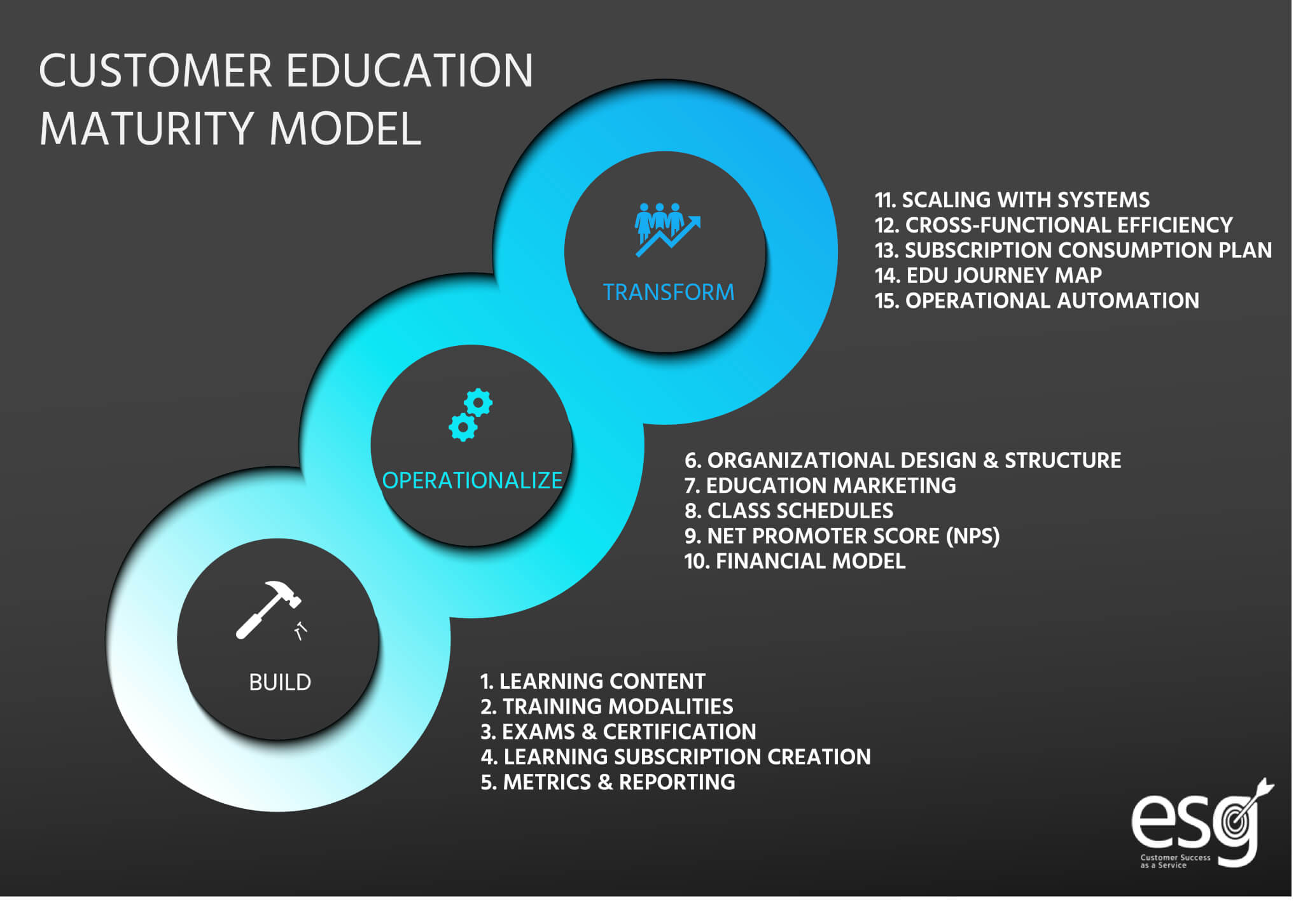Like many things in the world today, the role and purpose of education organizations inside companies is very dynamic. Once a stalwart of technology offerings, education departments were able to get by with producing quality content and scheduling courses to deliver that content for many years. With the dawn of the digital era, much of that content moved online and was made available in an on-demand format, pulling training teams forward. That too was good enough for awhile, but not anymore.
The arrival of the subscription economy changes everything. Gone are the days when most learners are interested in paying a one-time fee for access to a one-time course, whether in person or a live, virtual session. Like many other aspects of life, these learners and their respective companies buy as much as possible through subscriptions today. This seismic shift creates both opportunity and risk for education team leaders and leads to questions like:
- Is my content valuable enough to fill a 12-month subscription?
- Is my content organized in a self-serve training path that is easy to follow?
- Does my offering include live virtual access to instructors and engineers?
- Am I able to collect consumption data to determine the adoption rate for each subscriber?
- Is there a post-sale action plan to make sure the subscription is understood and utilized?
- Do I have a health index by subscriber?
- What is my renewal strategy?
- How do all of these motions fit in with other customer communication plans coming from Customer Success, marketing and sales?
Dizzy yet? It can all be pretty overwhelming, so let’s back up, zoom out, and simplify this whole scenario. One way to accomplish this needed simplification is to consider your overall organizational maturity along a defined model with benchmarks. At ESG we simplify maturity into 3 phases: Build, Operationalize, and Transform. It is important to know where you are on this escalating scale of education maturity in order to prioritize your precious resources toward the biggest impact.

In the Build phase, you are focused on the creation of the fundamentals for success. Creating the most compelling content and determining the best delivery modalities fall into this first phase of education maturity as program staples. So does building certification paths to document the achievement of your learners. Determining a solid data set that includes the KPI’s most relevant to your product or service will enable you to advance further into the maturity model.
The next phase of education maturity is Operationalize, which extends the thinking outside of the education team to pull in other departments relied upon for success. Marketing plays a critical role here, enabling you to reach your install base with new course offerings or certifications. Your partnership with the finance team provides the economic framework to operationalize your offerings in a way that maximizes profit and minimizes cost. Learning subscriptions depend upon this cross functional input and must have valuable content included (education team), wide awareness in the marketplace (marketing) and be priced appropriately (finance).
The highest level of education maturity in this model is Transform. At this level, technology, scaling, and automation move to the forefront. Self-serve abilities become a premium. Sequencing education outreach with Customer Success outreaches must be coordinated through the eyes of the customer. Documenting an education-specific journey map is a requirement to make this happen. Learning subscription consumption management must be activated here, providing access to usage data, health scores, and subsequent playbooks to ensure learners are maximizing the value of their subscription and thus more likely to renew.
When considering this rapidly shifting environment through this education maturity model, opportunities emerge and priorities can align to advance your education team’s charter with your customers who are in need of the valuable service you provide. How can we help?

